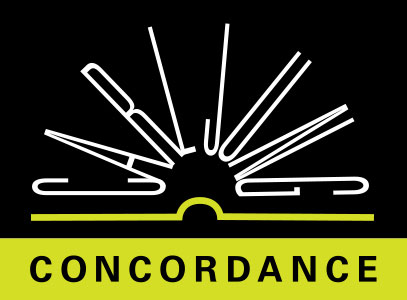The vignette (fig. 144) that is on the title-page to the Tripus aureus (1678) is a graphic illustration of the double face of alchemy:
Artists in library and laboratory
Maier, Tripus aureus (1618), from title pageMusaeum hermeticum (1678)
The picture is divided into two parts. On the right is a laboratory where a man, clothed only in trunks, is busy at the fire; on the left a library, where an abbot, a monk, and a layman are conferring together. In the middle, on top of the furnace, stands the tripod with a round flask on it containing a winged dragon
CW12 ¶ 404The dragon symbolizes the vision and experience of the alchemist as he works in his laboratory and “theorizes.” The dragon in itself is a monstruma symbol combining the chthonic principle of the serpent and the aerial principle of the bird. It is, as Ruland says, a variant of Mercurius
CW12 ¶ 404But Mercurius is the divine winged Hermes (fig. 146) manifest in matter, the god of revelation, lord of thought and sovereign psychopomp
CW12 ¶ 404Mercurius as “uniting symbol”
Valentinus “Duodecim claves,” Musaeum hermeticum (1678). Color transcription by Adam McLean.
QUICKSILVER
The liquid metal, argentum vivum“living silver,” quicksilverwas the wonderful substance that perfectly expressed the nature of the:that which glistens and animates within. When the alchemist speaks of Mercurius, on the face of it he means quicksilver, but inwardly he means the world-creating spirit concealed or imprisoned in matter
CW12 ¶ 404DRAGON
The dragon is probably the oldest pictorial symbol in alchemy of which we have documentary evidence. It appears as the,the tail-eater in the Codex Marcianus (fig. 147) , which dates from the tenth or eleventh century, together with the legend:(the One, the All.) Time and again the alchemists reiterate that the opus proceeds from the one and leads back to the one, that it is a sort of circle like a dragon biting its own tail (fig. 020) , (fig. 044) , (fig. 046) . For this reason the opus was often called circulare (circular) or else rota (the wheel) (fig. 080)
CW12 ¶ 404Uroboros
Codex Marcianus (11th cent.)
Six planets united in the seventh, Mercury
The image depicts the Uroboros, and the red-and-white (hermaphrodite) double eagle.Thomas Aquinas (pseud.), “De alchimia” (MS., 16th cent.)
Mexican calendar
Engraving from HerrlibergerHeilige Ceremonien (1748). In author's collection, (C.G.J.)
Crowned dragon as tail-eater
Left, a crowned dragon forms a circle, eating his tail. Right, two dragons form a circle, also eating their tales. Signs of the four elements are placed in the four corners.Eleazar, Uraltes chymisches Werk (1760)
Mercurius turning the eight-spoked wheel
The wheel symbolizes the alchemical process. In one hand he holds the telum passionis.“Speculum veritatis” (MS., 17th cent.)
Mercurius stands at the beginning and end of the work. He is:
CW12 ¶ 404The prima materia
The caput corvi
The nigredo
As dragon he devours himself and as dragon he dies, to rise again as the lapis
He is the play of colours in the cauda pavonis and the division into four elements
He is the hermaphrodite that was in the beginning, that splits into the traditional brother-sister duality and is reunited in the coniunctio, to appear once again at the end in the radiant form of the lumen novum, the Stone
He is metallic yet liquid, matter yet spirit, cold yet fiery, poison and yet healing draughta symbol uniting all opposites (fig. 148)
Mercurius as caduceus uniting the paired opposites
“Figurarum Aegyptiorum secretarum” (MS., 18th cent.). In author's collection, (C.G.J.).
